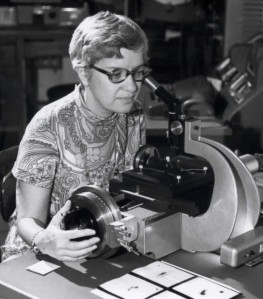
Woman of the Week - Vera Rubin
Published on 22/11/16
 You've almost definitely heard of dark matter, but have you heard of the woman who proved it's existence? The first evidence of dark matter was found by the astronomer Vera Rubin in the 1970s, who observed that stars at the edge of galaxies move much faster than expected. Calculations using visible mass predicted that the stars should be moving considerably slower speeds, so something else had to be causing this increase in velocity; dark matter. The phenomenon had been predicted in the 1930s by Fritz Zwicky but it wasn't until Rubin 40 years later that it was proven.
You've almost definitely heard of dark matter, but have you heard of the woman who proved it's existence? The first evidence of dark matter was found by the astronomer Vera Rubin in the 1970s, who observed that stars at the edge of galaxies move much faster than expected. Calculations using visible mass predicted that the stars should be moving considerably slower speeds, so something else had to be causing this increase in velocity; dark matter. The phenomenon had been predicted in the 1930s by Fritz Zwicky but it wasn't until Rubin 40 years later that it was proven.Rubin developed an interest in astronomy at the age of 10 and at 18 gained a scholarship to Vassar, a prestigious women's college, graduating as the only astronomy major. She initially applied to Princeton for grad school, but was bluntly told "Princeton doesn't accept women", so instead went to Cornell, studying most notably under Richard Feynman. She gained her Ph.D. from Georgetown University in 1954.
Her evidence of dark matter, discovered with Kent Ford, was initially the cause of much scepticism in the astronomical community, but has now become a widely accepted theory as the evidence is so clear. Rubin has since gone on to discover new galaxies, where half the stars orbit in the opposite direction, a very unusual gravitational effect caused by interactions with neighbouring galaxies. In recognition of her discoveries, Rubin has been elected to the American National Academy of Sciences, the second ever woman to achieve this, and has been awarded the National Medal of Science. She has used her position to speak out about the gender bias in scientific journal reviews and actively encourage more women to pursue scientific careers.
Of her work and legacy, Rubin said: "Fame is fleeting, my numbers mean more to me than my name. If astronomers are still using my data years from now, that’s my greatest compliment."
Her evidence of dark matter, discovered with Kent Ford, was initially the cause of much scepticism in the astronomical community, but has now become a widely accepted theory as the evidence is so clear. Rubin has since gone on to discover new galaxies, where half the stars orbit in the opposite direction, a very unusual gravitational effect caused by interactions with neighbouring galaxies. In recognition of her discoveries, Rubin has been elected to the American National Academy of Sciences, the second ever woman to achieve this, and has been awarded the National Medal of Science. She has used her position to speak out about the gender bias in scientific journal reviews and actively encourage more women to pursue scientific careers.
Of her work and legacy, Rubin said: "Fame is fleeting, my numbers mean more to me than my name. If astronomers are still using my data years from now, that’s my greatest compliment."